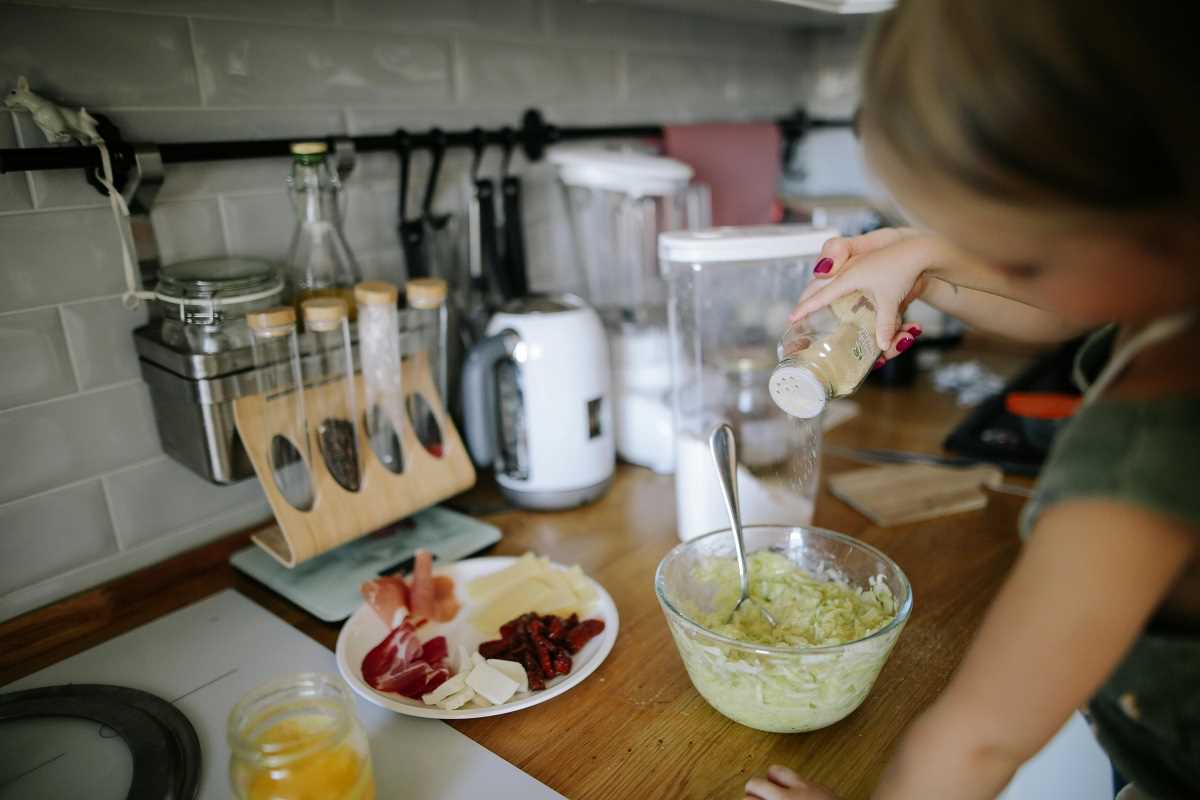Teaching children to cook at a young age is one of the most valuable skills you can pass on as a parent. It goes beyond preparing meals; it teaches creativity, responsibility, teamwork, and even basic math and science concepts. Cooking together can also strengthen parental bonds and encourage kids to develop healthy eating habits.
By introducing kids to cooking gradually with age-appropriate tasks, you can create a fun, safe, and educational experience. Here’s a guide to teaching kids to cook, complete with meal ideas and practical tips for different age levels.
Benefits of Teaching Kids to Cook
Before we dig into the specifics, here’s why teaching kids to cook is essential for their growth and development:
- Life Skills: Cooking is a fundamental life skill that promotes independence and confidence.
- Healthy Eating Habits: Kids are more likely to eat and enjoy healthy foods when they’ve helped prepare them.
- Education: Cooking involves measuring, counting, and problem-solving, which teaches math, reading, and science concepts in a hands-on way.
- Creativity: Experimenting with different ingredients fosters creativity and encourages kids to try new things.
- Family Bonding: Cooking together creates lasting memories and strengthens the parent-child relationship.
Starting at a young age ensures children grow up seeing the kitchen as an exciting, safe, and engaging place.
Age-Appropriate Cooking Tasks and Meal Ideas
Here's a step-up program you can use at home, so you can start preparing your little chefs of the future to cook at home instead of eating out for the rest of their lives:
1. Toddlers (Ages 2-3): Building Familiarity and Confidence
Toddlers are naturally curious and love to mimic adults. While they’re not yet ready to handle sharp tools or hot surfaces, there are plenty of safe, simple tasks they can enjoy to feel involved.
Tasks for Toddlers:
- Washing fruits and vegetables.
- Stirring ingredients in a bowl (under supervision).
- Tearing lettuce or herbs like basil and parsley.
- Helping sprinkle cheese, seasonings, or toppings.
- Offering them a chance to pour pre-measured ingredients like milk or water.
Meal Ideas for Toddlers:
- Mini Pizzas: Use pre-made pizza bases or English muffins. Toddlers can spread sauce, sprinkle cheese, and add toppings like sliced olives, cherry tomatoes, and pre-cooked chicken.
- Fruit Parfaits: Layer yogurt, granola, and fruits like berries or bananas. Toddlers can handle scooping and layering with minimal mess that you can guide.
- Smoothies: Blend fruits and veggies with yogurt or milk. Toddlers can help add ingredients to the blender and press the button (with supervision).
Safety Tip: Always supervise closely and keep small choking hazards, sharp items, and hot surfaces out of reach.
2. Young Children (Ages 4-6): Gaining Basic Skills
At this stage, kids have better hand-eye coordination and longer attention spans. They’re ready to practice simple skills like spreading, mixing, and cutting soft foods with age-appropriate tools.
Tasks for Young Children:
- Cutting soft fruits like bananas or strawberries using a plastic or child-safe knife.
- Spreading butter, cream cheese, or peanut butter on bread or crackers.
- Whisking eggs or pancake batter.
- Measuring dry and liquid ingredients with cups and spoons.
- Placing muffin liners in tins or rolling dough for cookies.
Meal Ideas for Young Children:
- Pancakes or Waffles: Make a simple batter together, and have them practice whisking and pouring (you can handle flipping on the stove).
- Sandwiches or Wraps: Provide a variety of fillings and let them assemble their own creations. Offer lettuce, deli meat, sliced cheese, or veggies like cucumbers and carrots.
- Veggie Dips: Teach them to cut softer vegetables (like bell peppers) and pair them with hummus or ranch dressing.
- Scrambled Eggs: Kids can whisk eggs, measure milk, and sprinkle cheese for simple, protein-packed breakfasts.
Safety Tip: Use safety knives and explain why certain areas of the kitchen (like the stove) are off-limits without supervision.
3. School-Aged Kids (Ages 7-9): Building Confidence with Supervised Independence
By this age, children can handle more detailed tasks and start using basic tools with guidance, like peelers and kitchen thermometers. They’re also understanding instructions better, which means they can take part in more complex recipes.
Tasks for School-Aged Kids:
- Peeling vegetables like carrots or cucumbers.
- Grating cheese or zesting citrus fruits (with supervision).
- Operating a blender, toaster oven, or microwave for basic recipes.
- Rolling dough and using cookie cutters for baking projects.
- Cracking eggs and separating yolks and whites.
Meal Ideas for School-Aged Kids:
- Homemade Pasta or Salad: Kids can make a simple dressing for salad or mix cooked pasta with sauce, veggies, and cheeses.
- Tacos: Offer taco shells or tortillas and ingredients like seasoned ground beef, beans, cheese, salsa, and shredded lettuce. They can assemble their own tacos.
- Vegetable Soup: Teach them how to measure water and add chopped veggies, rice, or noodles to a pot. Allow them to stir as it cooks (with supervision).
- Baked Goods: Muffins, cookies, or banana bread are excellent for practicing measuring and mixing.
Safety Tip: Now’s a good time to teach the basics of handling heat, like using oven mitts and staying cautious around hot pans.
4. Pre-Teens (Ages 10-12): Working Toward Independence
Pre-teens are ready to take on more responsibility and tackle recipes with multiple steps. They can also start using sharper tools like chef’s knives or slicing mandolins, as well as cook independently at the stove with careful oversight.
Tasks for Pre-Teens:
- Following recipes from start to finish.
- Chopping harder vegetables like onions, peppers, or potatoes.
- Boiling pasta or cooking simple meals on the stove (with supervision).
- Using handheld mixers or food processors for baking or meal prep.
- Learning plating and presentation skills.
Meal Ideas for Pre-Teens:
- Stir-Fry: They can chop vegetables, cook chicken or tofu, and mix in pre-made sauces for a tasty, quick dinner.
- Omelets: Teach them to sauté vegetables and fold eggs for a classic breakfast or lunch option.
- Burgers: From shaping patties to grilling them on a stovetop or in a pan, this is a fun introductory recipe for meat-lovers and vegetarians alike.
- Personalized Pizzas: Build on earlier pizza-making skills, allowing them to create dough from scratch and add toppings of choice.
Safety Tip: Equip them with proper knife skills and reinforce safe practices like turning off burners right after use and cleaning up spills to avoid accidents.
Tips for a Safe and Fun Cooking Experience
- Set Up a Kid-Friendly Workspace: Designate a specific area where your child can safely reach tools and ingredients without climbing or straining.
- Invest in Child-Safe Kitchen Tools: Consider child-sized aprons, knives, and peelers to make tasks manageable and safe.
- Encourage Clean-Up: Teach kids to always clean their workspace and wash their hands before and after handling food.
- Be Patient: Mistakes and messes are inevitable—focus on celebrating progress and effort rather than perfection.
- Introduce Variety: Expose kids to a wide range of ingredients to broaden their palate and culinary curiosity.
- Make It Fun: Add a little music, make silly shapes with dough, or turn cooking into a themed activity, like creating rainbow-colored dishes.
By starting with simple tasks and gradually introducing new skills, cooking becomes an exciting and rewarding activity for children of all ages.
Turn mealtime into a shared learning experience and watch your little chefs flourish. Who knows? They might even surprise you with breakfast in bed one day!
 (Image via
(Image via





